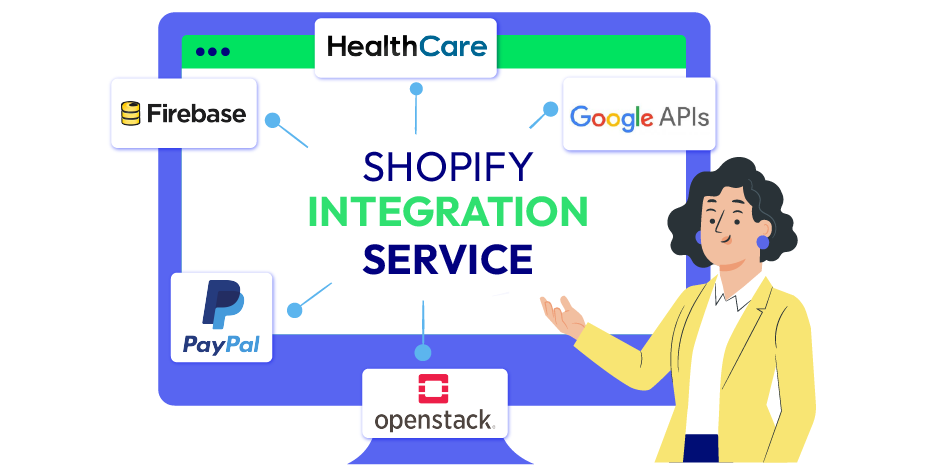Shopify Return API: Challenges and best practices to overcome
Summer Nguyen | 12-04-2023

Dealing with returns and refunds within Shopify can be time-consuming. Are you looking for a more optimal and efficient approach? Thankfully, the answer is in this article! Continue reading to discover ways to enhance the Shopify return API process for your Shopify store.
What is Shopify return API?
“Shopify return API” refers to the process of customers returning products they’ve purchased from a Shopify-based online store. When a customer is dissatisfied with a product, encounters a problem, or simply changes their mind, they may initiate a return to send the item back to the store and receive a refund or exchange.
The specifics of the return process, including return policies, procedures, and options, can vary from one Shopify store to another, as each store can set its own policies and guidelines for handling returns.

However, the specific details and capabilities of managing returns on a Shopify store may depend on the store’s configuration and any additional apps or tools the store owner has integrated.
It’s important for both customers and store owners to be aware of the return policies set by the specific Shopify store they are dealing with, as these policies can vary widely from one store to another.
Why is a customized Shopify return API necessary?
A customized Shopify return API can be necessary for several reasons:
- Tailored Workflow: Every business has unique processes and requirements for handling returns. A customized return API allows businesses to build workflows aligning with their needs. This means they can create a return process that seamlessly integrates with their existing systems, reducing manual work and potential errors.
- Enhanced Customer Experience: A customized return API can provide a better customer experience. By streamlining the return process, businesses can offer faster refunds or exchanges, increasing customer satisfaction and loyalty.
- Automated Handling: Customizing the Shopify return API can automate many aspects of the return process. This automation can save time and eliminate the risk of human error when handling returns, which is especially important for businesses with a high volume of returns.
- Data and Analytics: Custom APIs can provide detailed data and analytics on returns. Businesses can gain insights into the reasons for returns, the types of products being returned, and the efficiency of the return process. This data can inform business decisions and strategies for reducing returns in the future.
- Integration with Other Systems: Many businesses use multiple software systems, such as inventory management, order fulfillment, and customer relationship management. A customized API can facilitate seamless integration between these systems, allowing better coordination and communication when processing returns.
- Branding and Messaging: A customized return API can ensure that the return process aligns with the brand’s messaging and customer communication. This consistency can help maintain a positive brand image even in the face of returns and refunds.
- Compliance and Regulations: Some industries or regions have specific regulations and compliance requirements for handling returns. A customized return API can be designed to ensure that the business complies with these regulations, reducing legal risks.
- Scalability: As a business grows, its return needs may change. A customized API can be adapted and scaled to accommodate these changes, ensuring that the return process remains efficient and effective.
- Competitive Advantage: Offering a streamlined and efficient return process can be a competitive advantage in the e-commerce industry. It can set a business apart from competitors and attract more customers.
In summary, a customized Shopify return API is necessary for businesses that want to optimize their return processes, provide a better customer experience, and stay competitive in the e-commerce market.
Customization allows businesses to adapt their return workflows to their unique needs and integrate with other systems while ensuring compliance with regulations and maintaining their brand identity.
Challenges with Shopify’s default return API
Shopify’s default return API has some limitations and challenges that businesses might encounter. Here are some common challenges associated with Shopify’s default return API:
Challenges with Shopify’s Default Return API
- Limited Customization: The default return API in Shopify had limited customization options. It might not cater to the specific needs of all businesses, especially those with unique return policies or workflows. Customization often required additional development work.
- Complexity for Non-Technical Users: Shopify’s default return system could be complex for non-technical users or store owners unfamiliar with coding or API integration. Customizing return processes often requires technical expertise.
- Inadequate Automation: The default return API lacked robust automation features. Businesses may need to perform many manual tasks to process returns, which can be time-consuming and error-prone, especially for stores with a high volume of returns.
- Limited Reporting and Analytics: Reporting and analytics capabilities for returns within Shopify’s default system were somewhat basic. Businesses might struggle to gain deep insights into return patterns and reasons, making it challenging to optimize their return management.
- Limited Integration: While Shopify provides various integrations and apps, integrating with other third-party systems, such as inventory management or accounting software, might not be straightforward with the default return API.
- Inconsistent User Experience: The return process might not provide a consistent user experience for customers across all stores. This can affect customer satisfaction and brand perception.
- Lack of Compliance Features: Some industries or regions have specific compliance requirements for return processes. Shopify’s default API might not have built-in features to handle these needs.
- Scalability Issues: Businesses that experience rapid growth may find it challenging to scale their return processes using Shopify’s default return API. It may not efficiently handle a high volume of returns without additional customization.
- Limited Communication Options: The default return API might not offer extensive communication options for notifying customers about return status or changes, which could lead to customer confusion or frustration.
- Inefficient Restocking: For businesses that need to restock returned items, the default API might not provide efficient tools for tracking and managing inventory adjustments.
How to issue a Shopify refund
To issue a Shopify refund, you can follow these steps:
- Go to your Shopify admin panel.
- Click Orders and choose the Order ID # that you want to refund.
- Click Refund order.
- You have the option to issue refunds for specific items using the dropdown menu located beside each product’s name, or enter the quantity that you want to refund for each line item in the Refund Amount field
- To refund the shipping expense, utilize the “Refund shipping” section. Shopify will present the shipping method and associated cost for the order.
- Optional – you can include a note in the “Reason for refund” field for your personal record-keeping purposes.
- If you don’t want to return the refunded items to inventory, then disable the Restock toggle button.
- Click refund.
How to use the Shopify Return API?
The Shopify Return API is known for its user-friendly nature. To begin, merchants simply need to set up a Shopify account and install the Return API app. After installation, they can promptly initiate and oversee returns directly through their Shopify admin dashboard.
The process of using Shopify Return API often comes in 3 simple steps:
- Creating returns: Utilizing the Shopify Return API for initiating a return is a straightforward process for merchants. They only need to indicate the order to which the return pertains, specify the items being sent back, and provide the rationale for the return. Subsequently, the API will automatically generate a return label that can be forwarded to the customer.
- Managing returns: From their Shopify admin dashboard, merchants can access and oversee all their returns. This includes modifying return statuses, processing refunds, and creating fresh return labels as needed.
- Tracking returns: Merchants can actively monitor the status of returns in real-time through their Shopify admin dashboard. They can track key milestones, including the return’s shipment by the customer, its reception by the merchant, and the processing stage.
Tips for using the Shopify Return API:
- Make sure you use the correct API version. The Shopify API is constantly being updated, so it is important to ensure you are using the most recent version.
- Use the API endpoints that are most appropriate for your needs. The Shopify Return API provides a variety of endpoints, so you can choose the ones most relevant to your application.
- Authenticate your requests using an API access token. This will ensure that your requests are authorized and that you have access to the data you request.
- Parse the JSON response carefully. The Shopify Return API returns JSON responses, so you must parse them to extract the data you need.
Shopify Integration Service
Let's seamlessly connect your store to powerful tools and platforms and accelerate sales like never before!
Learn more
Best practices for Shopify Return API
Here are some best practices for working with Shopify Return APIs:
1. Understand Shopify’s Return API documentation
To begin with, understanding Shopify’s Return API documentation is essential. Having a good background knowledge of Shopify Return API means having the necessary knowledge and guidance to ensure your integration’s accuracy, compliance, and efficiency.
The documentation helps you avoid errors, handle rate limiting, implement proper security measures, and stay updated on version changes and new features.

2. Customization for business needs
Customization for business needs is irreplaceable if businesses want to tailor their return processes to specific requirements and customer expectations. Shopify’s API provides a foundation, but customization allows businesses to implement workflows and user experiences that align with their unique business model and customer base.
By customizing the return process, businesses can enhance user satisfaction, improve operational efficiency, and differentiate themselves in the market.
This can involve offering various return options, integrating with specific inventory or accounting systems, or creating a branded and user-friendly return portal, all of which contribute to a better customer experience and more effective return management.
3. User-friendly return forms
User-friendly return forms directly impact the customer experience. This is why it is one of the most critical elements of best practices for Shopify Return API.
Making the return process as straightforward and user-friendly as possible minimizes customer frustration, reduces the likelihood of abandoned returns, and promotes brand loyalty.
By providing clear and easy-to-navigate return forms, businesses can guide customers through the process, ensuring that all necessary information is collected accurately.
This streamlines the return process and contributes to a positive perception of the brand, which can lead to repeat purchases and positive word-of-mouth recommendations. Ultimately, user-friendly return forms help businesses maintain a strong and favorable reputation in the highly competitive e-commerce landscape.
4. Optimize for mobile users
Due to the growing prevalence of mobile shopping, optimizing for mobile users is very necessary. Mobile devices are increasingly the platform of choice for online shopping, including initiating returns.
Ensuring that the return process is mobile-friendly guarantees that customers can easily complete their returns on smartphones or tablets, which, in turn, enhances the overall user experience. Failing to cater to mobile users can lead to frustration, cart abandonment, and a negative perception of the brand.
By optimizing for mobile, businesses can improve customer satisfaction, reduce bounce rates, and boost the likelihood of repeat purchases, ultimately leading to improved sales and brand loyalty.
5. Streamline the return authorization process
As for simplifying and expediting return handling while enhancing the overall customer experience, businesses can consider streamlining the return authorization process.
When the return authorization process is efficient, customers can quickly and easily obtain approval for their returns, reducing frustration and potential cart abandonment. It also benefits businesses by expediting the return process, allowing for quicker inventory restocking or inspection of returned items.
Furthermore, streamlining this process reduces manual intervention and the risk of errors, contributing to a more cost-effective and error-free returns management system. Overall, a smooth return authorization process benefits customers and businesses, fostering satisfaction and efficiency.
6. Real-time return status updates
Real-time return status updates are also of paramount importance in the context of best practices for the Shopify Return API. They significantly enhance transparency and communication throughout the return process.

This not only reduces customer inquiries and frustration but also builds trust and confidence in the brand. For businesses, real-time updates enable proactive and timely resolution of return issues, helping maintain customer satisfaction and brand reputation.
Ultimately, integrating real-time return status updates empowers both businesses and customers to make informed decisions and ensures a smoother, more efficient return process.
7. Automate label generation and shipping
Automating label generation and shipping within the Shopify Return API best practices is crucial for several reasons.
First and foremost, it expedites the return process, ensuring that customers can initiate returns swiftly and without the hassle of manual label creation or shipping arrangements. Not only does it boost customer satisfaction, but this convenience also reduces the workload for businesses, saving time and resources.
Additionally, automating this aspect enhances accuracy and consistency in label generation, reducing the risk of errors and delays. Moreover, it contributes to sustainability efforts by optimizing packaging and reducing waste.
Overall, automation of label generation and shipping is a win-win for both customers and businesses, streamlining the return process while improving efficiency and sustainability.
8. Utilize webhooks for real-time updates
If you want to ensure that both businesses and customers have immediate visibility into the return process, then you should utilize webhooks for real-time updates.
Webhooks enable automated notifications and updates, keeping customers informed at every stage of their return and businesses well-informed about return requests and their progress.
This reduces customer inquiries and facilitates quicker resolution of return-related issues. Additionally, it enhances transparency, trust, and customer satisfaction, ultimately fostering a more positive and efficient return experience.
Using webhooks, businesses can proactively manage and respond to return requests, strengthening customer relationships and streamlining operations.
9. Comprehensive reporting and analytics
Comprehensive reporting and analytics are vital in the realm of best practices for the Shopify Return API because they provide valuable insights and data-driven decision-making capabilities.
By tracking and analyzing return data, businesses can identify trends, patterns, and improvement areas in their return processes. This information allows for more informed decision-making, such as optimizing return policies, identifying product quality issues, or streamlining return operations.
Furthermore, it helps businesses understand the financial implications of returns, including potential losses, restocking costs, and opportunities for cost reduction.
Overall, comprehensive reporting and analytics empower businesses to fine-tune their return management, enhance customer satisfaction, and optimize their return-related strategies, ultimately resulting in improved efficiency and profitability.
10. Clear return policy page
A clear return policy page is a fundamental element of best practices for the Shopify Return API. It provides essential information to customers, setting their expectations and reducing confusion.
A well-documented return policy page outlines the terms and conditions for returns, including eligibility criteria, timeframes, and any associated fees. This transparency helps customers make informed purchasing decisions and understand the return process, which, in turn, fosters trust and satisfaction.

Ultimately, a clear return policy page contributes to customer confidence and loyalty while minimizing the potential for disputes, making it a key element of effective returns management.
11. Multiple return options
Offering multiple return options can cater to customers’ diverse needs and preferences.
Not all customers have the same return requirements, and providing choices like in-store returns, mail-in returns, or exchanges can significantly enhance the customer experience. It grants customers the flexibility they desire, ensuring that the return process aligns with their convenience and lifestyle.
By accommodating these varied preferences, businesses can boost customer satisfaction, reduce return-related friction, and potentially retain more customers who value hassle-free returns.
It also showcases a commitment to customer-centricity, which is increasingly critical in today’s competitive e-commerce landscape, ultimately contributing to brand loyalty and long-term success.
12. Regularly test and monitor the API
To maintain best practices for the Shopify Return API, businesses need to identify and rectify issues proactively. The key solution for this is to test and monitor the API regularly
Through testing, businesses can ensure that their API integrations are functioning correctly, essential for providing a seamless customer experience and avoiding disruptions. On the other hand, monitoring allows businesses to track API performance, detect anomalies or downtime, and understand usage patterns.
By continuously assessing API performance, businesses can uncover potential bottlenecks, security vulnerabilities, or areas for improvement, thus enhancing the overall reliability and efficiency of their return processes.
This proactive approach ensures that the API aligns with best practices and guarantees that customers and the business itself can rely on it for smooth return operations.
13. Data security and privacy
Last but not least, data security and privacy are essential in the context of best practices for the Shopify Return API.
Handling sensitive customer information and transaction data is an inherent part of the return process, and safeguarding this data is critical for building trust and complying with data protection regulations. Implementing robust security measures, such as encryption and access controls, helps protect customer data from breaches and unauthorized access.
By ensuring data privacy, businesses not only maintain legal compliance but also protect their reputation and customer trust, which are crucial in the competitive e-commerce landscape.

Improving customer experience with enhanced returns
Improving the customer experience with enhanced returns is crucial for retaining customer loyalty and building a positive brand reputation. Here are some strategies to enhance the customer experience during the returns process:
- Simplified returns process for customers
- User-Friendly Return Portal: Create a user-friendly online portal where customers can easily initiate returns. Provide clear instructions and a step-by-step process.
- Prepaid Return Labels: Whenever possible, offer prepaid return shipping labels to eliminate the cost and hassle for the customer. Include these labels in the package or allow customers to print them directly from your website.
- Clear Return Instructions: Provide straightforward return instructions, including how to package the item and where to drop it off or schedule a pickup.
- Self-Service Tools: Implement self-service tools that allow customers to generate return labels and initiate returns without contacting customer support.
- Tracking and transparency
- Real-Time Status Updates: Implement systems that provide customers with real-time updates on the status of their return. This can include notifications when the returned item is received and when the refund or exchange is processed.
- Online Tracking: Allow customers to track their return’s progress through your website. Include a tracking number and links to shipping carriers for convenience.
- Transparency in Policies: Clearly communicate your return policy, including timeframes, conditions, and procedures. Make sure customers know what to expect.
- Personalization and communication
- Personalized Customer Support: To address specific return issues and concerns, provide personalized customer support. Ensure your support team is well-trained in handling returns.
- Follow-Up Communication: Follow up with customers after the return to ensure they are satisfied with the resolution. This shows that you value their feedback and are committed to their satisfaction.
- Surveys and Feedback: Encourage customers to provide feedback on their return experience through surveys or feedback forms. Use this data to make improvements.
- Proactive Problem Resolution: Anticipate common return issues and proactively address them in your return policy or FAQs. Offer solutions or alternatives where possible.
- Customized Solutions: Whenever feasible, offer customized solutions to customers, such as alternative products or discounts, to address their specific needs and concerns.
- Educational Resources: Provide educational resources to customers on using and caring for products to reduce the likelihood of returns.
By focusing on a simplified returns process, tracking and transparency, and personalization and communication, you can enhance the customer experience during returns. Customers will appreciate the convenience, clarity, and personalized support, increasing your brand’s satisfaction and loyalty.
Conclusion
In conclusion, the Shopify Return API offers a powerful tool for businesses to manage returns efficiently and enhance the customer experience. By understanding the API documentation, customizing processes to business needs, and prioritizing elements like real-time updates and data security, companies can navigate these challenges and unlock the full potential of the Shopify Return API.





